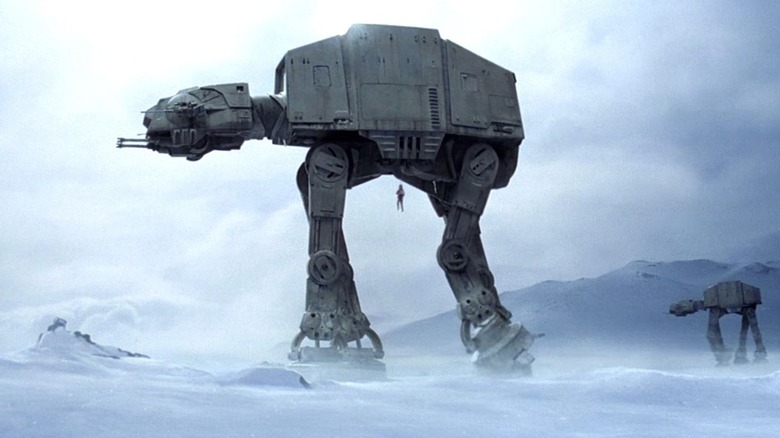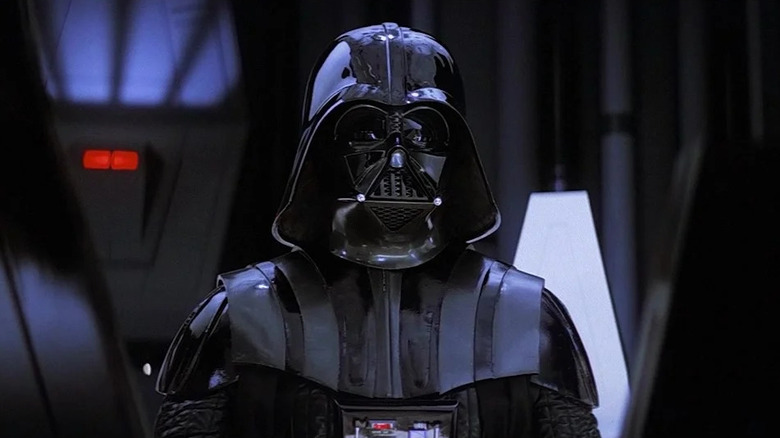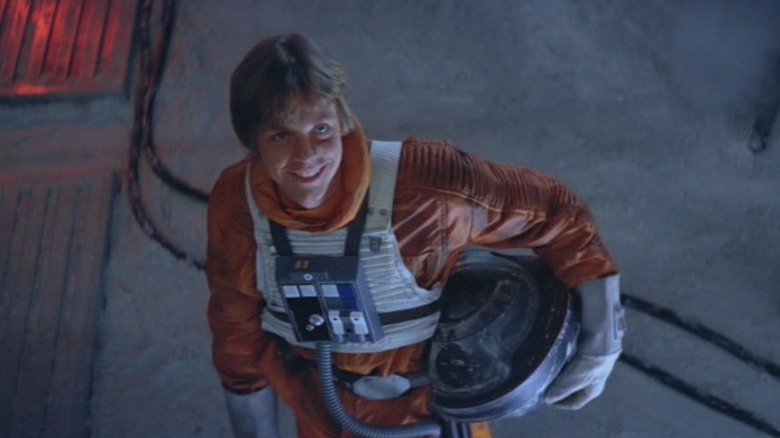Why Star Wars Creator George Lucas Trusted Irvin Kershner To Direct The Empire Strikes Back
Conventional wisdom dictates that Irvin Kershner's 1980 film "The Empire Strikes Back" is the best feature in the long-running "Star Wars" film series. Although only the second film — the third if you count "The Star Wars Holiday Special" — "Empire" startled audiences by announcing itself as "Episode V." It wouldn't be until 1981 that 35mm prints of George Lucas' "Star Wars" would attach "Episode IV: A New Hope" to the beginning.
Fans of "Empire" appreciate its relatively bleak tone when compared to the rollicking, traditional, 1930s-adventure-serial vibe of the 1977 film. The tone is grayer, the heroes are less assured to win the day, and the film ends without concluding, leaving audiences hanging right when Han Solo (Harrison Ford) is apprehended by the mob, and after Luke Skywalker (Mark Hamill) has his hand severed in a fight with the evil Darth Vader (body by David Prowse, voice by James Earl Jones). Darth Vader also claimed to be Luke's father in that scene, a bombshell that, upon re-visitation, sounds like a lie. How keen it would have been to begin the following sequel with a revelation that Darth Vader was merely toying with Luke Skywalker.
"Empire" was such a hit, and was re-watched so many times on its eventual VHS release, that it eventually expanded into one of the very centerpieces of all geek culture. If a lightweight genre film affects a bleak tone and deliberately does not conclude, it owes a debt to the cultural ubiquity of "The Empire Strikes Back" — and to Irvin Kershner.
A question arises, however. if "Star Wars" was Lucas' brainchild, why delegate directorial duties to someone new for the sequel? The answer was very simple: Lucas was busy moving.
Moving to NorCal
In a 2020 retrospective on StarWars.com, Lucas talks about what was going on in his life in 1979. It seems he was too busy starting his own companies — Lucasfilm and the special effects house Industrial Light and Magic — to direct. Either project would require his full attention, and he would have been stretched too thin. In his words:
"I was moving Industrial Light & Magic up here to San Francisco, where it was supposed to be in the first place. And I was working on making Lucasfilm, which existed, but ... we didn't really have the merchandising part [...] So I knew I had a lot to do and it would be very hard because, when I direct, I really am there 24/7. And I thought I would need a little extra time to sort out Lucasfilm. And so that's why I felt I needed to hire a director ... I couldn't run a studio, build ILM, and direct a movie at the same time."
Kershner, the director of films like "Hoodlum Street," "A Fine Madness," and "S*P*Y*S," was selected to helm "Empire," which was, to remind readers, a sequel to one of the biggest movies of all time. The reason for Lucas' selection is simple as well: Lucas knew Kershner in film school and liked his movies. Kershner and Lucas had, according to StarWars.com, met one another at the University of Southern California when Lucas was a student and Kershner was a lecturer. Lucas, along with many of his famous directing peers, is part of a filmmaking camp often called the Film School Generation, in that they were the first generation of filmmakers to attend (then-novel) film schools prior to their filmmaking careers.
Winding it up and letting it go
There wasn't anything more calculated about it. Kershner passed in 2010, and Lucas was eager to extoll the talents of a colleague. It all seemed casual and warm. Lucas wanted to suss out the film's story, lay down some groundwork in pre-production, and then step away. It didn't quite work out that way though. In Lucas' words:
"I knew Kershner from school. He was a friend and I figured he'd be good for it because he was a really great director. And then once we started the movie, I thought I'd be able to spend some time back here in San Francisco trying to get everything sorted out with the company. But as it turned out, when they went over to Finse to shoot the Battle of Hoth, they came back and they were weeks late and overbudget."
Finse, Norway is the location of the Hardangerjøkulen glacier, which served as a yeti-encrusted ice planet in the film. The shoot, according to "Star Wars" reporting at the time, was only meant to take four months, from March to June 1979. Shooting ended up taking the rest of the year, according to "The Making of Star Wars: The Empire Strikes Back" by JW Rinzler.
"The Empire Strikes Back" was released in the United States on May 21, 1980. The rest is history. There would, over the years, be 14 additional "Star Wars" films in theaters and on TV, with Lucas making three of them himself. There are 15 if you count hour-long 1986 animated "Droids" spinoff film "The Great Heep."
Kershner, meanwhile, would only direct two more feature films in his career. In 1983, he helmed the James Bond movie "Never Say Never Again," and in 1990, he would make the startling violent and hilariously gory "RoboCop 2." His final directing job was an episode of "SeaQuest DSV" in 1993.


